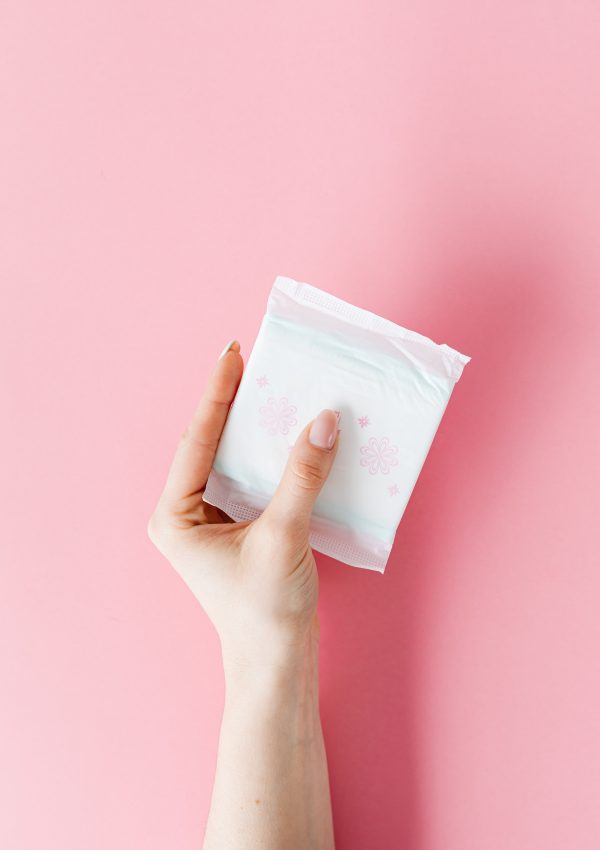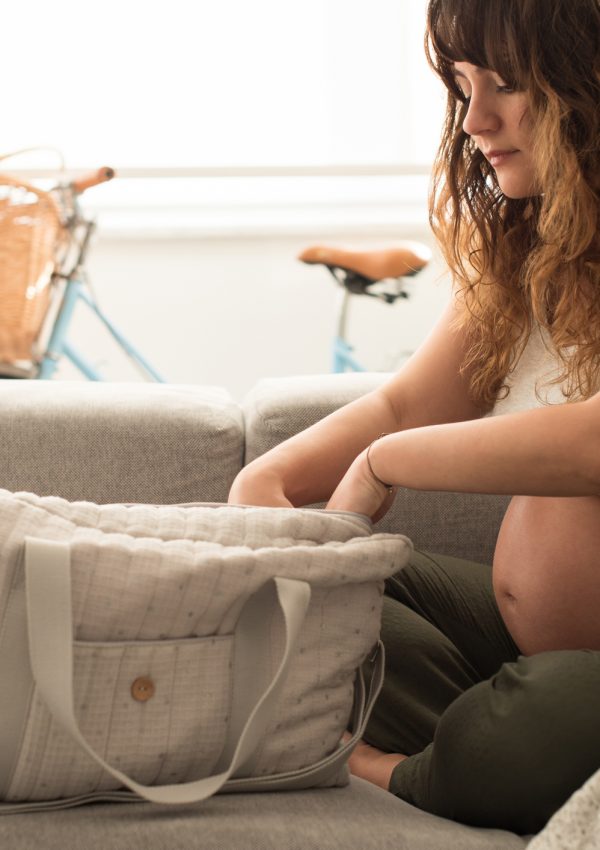This post may contain affiliate links, which means I’ll receive a commission if you purchase through my links, at no extra cost to you. Please read full disclaimer for more information.
Did you give birth recently and on the search for ways to speed up postpartum recovery? Here are simple ways to get you back to your old self in no time.
Having a baby is incredibly exciting and life-changing. Whether you’ve had the easiest or the most difficult labor, you magically forget it all once you’re holding your little one in your arms. After you give birth, you begin the transition into postpartum. Postpartum can be a rocky period for many mothers, so if you’re struggling, you’re not alone!
If you have other children who need you, or you need to return to work, you may feel like you need to find a way to speed up postpartum recovery. There are many ways where you can heal faster both mentally and physically. Here are some of the best ways that helped me.

This post is all about how you can speed up postpartum recovery.
How long does it take to heal completely?
The general timeline of recovery is 6-8 weeks, however, we’re not all the same. There are some women who bounce back after two weeks and some still don’t feel like themselves at 8 months postpartum. Both are normal as long as things aren’t getting worse.
Your recovery may take longer depending on many different factors such as the degree of tearing you had or whether you gave birth via a c-section.
How long does the bleeding last?
This also varies from woman to woman but the general timeline is up to 6 weeks. The bleeding has three major phases: Lochia, pink/brown, and white. The lochia, which is the heaviest bleeding, should stop after about 10 days.
The blood will then transition into a pink, then a brown color, which should have a lighter flow. This lasts for maybe a couple weeks before finally transitioning to a white discharge. To ensure that you’re speeding up your postpartum recovery, it’s important to not use tampons before 6 weeks postpartum.
You’ll want to stick with adult diapers or pads to prevent any further irritation to your perineal area.
17 ways you can speed up postpartum recovery
1. Go to your postpartum check-ups

One of the best ways you can speed up postpartum recovery is by going to your postpartum check-ups. After giving birth, you should have at least two check-ups: the first one at two weeks after birth, and the second one at six weeks.
At these visits, you and your OB-GYN (or midwife, doula, etc.) may take your weight and blood pressure, similarly to your prenatal visits. He or she may also check your stomach to ensure that it’s shrinking back down to its normal size.
Your prenatal check-ups are also a great time to discuss family planning options like birth control. Whereas your prenatal check-ups were more for the baby, your postpartum check-ups are for you. So make sure you take advantage of it!
Here are some great questions to ask at your check-ups:
- How long does the bleeding last and how heavy is too heavy?
- When can I start exercising?
- How long do I have to wait until I can have sex?
- If I’m breastfeeding, what are my birth control options?
- I’m worried about my first bowel movement, are there any medications I can take to soften my stools?
- I’m still in a lot of pain, are there medications I can take while breastfeeding?
- How can I manage the “baby blues”?
- How do I know if I have the baby blues or postpartum depression?
2. Care for your perineal area
If you gave birth vaginally, you will be sore for the next few weeks. That area will also be pretty sensitive so it’s important to take it easy, especially if you had some tearing. There are three main things I did after I gave birth, which helped immensely!
use a Peri-Bottle
Peri-bottles are a must-have postpartum product that you use whenever you go to the bathroom. If you tore during birth, it’s going to sting when you go to the bathroom unfortunately. Spraying lukewarm water by using a peri-bottle while you pee is a great way to ease the stinging. It also helps keep that area clean since you can’t wipe.
Frida Mom Upside-Down Peri Bottle
Try Tucks Medicated Cooling Pads
If you didn’t make padsicles before you gave birth, the Tucks pads are a great, cost-effective alternative. They are also soaked in a solution with witch hazel, which has healing properties. Lastly, Tucks pads are have a natural cooling effect, which helps sooth that area, especially if there’s swelling.
Tucks Medicated Cooling Pads
RELATED POST: The Most Genius Alternative to Padsicles
Shower regularly
I know that in those early days, finding the time to shower is not easy, especially if you have other kids. So whenever you can find a few minutes, a quick shower helps more than you know. If you’re still bleeding a lot, a shower will help keep your perineal area clean, which will speed up healing.
Don’t scrub that area though! I used a peri-bottle in the shower for the first few weeks until the stitches fell out. You want to be gentle since that’s the best way to heal quicker.
Take sitz baths

One of the best decisions I made after giving birth was taking sitz baths so if you have the time, you won’t regret it. Baths are not only relaxing but there are many benefits as well. Some of them include:
- Improving blood flow to your perineal area
- Soothing the soreness from childbirth
- Reducing muscle soreness
- Keeping your perineal area clean
While a plain old bath does the job, adding epsom salt and or soaps with lavender will give you added relief and relaxation. Soaking for 20 minutes a day is more than enough, but if you can do it more, it’ll help speed up your postpartum recovery.
3. Care for your c-section scar
Having a c-section is a huge surgery so you’re going to want to nurture your c-section scar and take it as easily as you can. The best first step in doing so is by asking your OB-GYN how you can proceed to care for it.
Once you’ve been given the go ahead, these options are generally safe:
- Breastfeeding positions like the football hold and the side-lying hold
- Running mild soap and water over the incision while showering
- Placing warm (not hot) heating pad on your belly
- Resting when you can
It’s also important to keep an eye out for any infections. Typically, your body will start to tell you when something isn’t right. If you’re noticing any of these things, you’ll want to call your OB immediately. Usual signs of infection are:
- The incision is swollen and not improving
- Discharge around the incision
- You don’t feel well
C-section recovery is typically longer than vaginal birth recoveries. The key is knowing your body and not rushing the recovery process in the early days.
4. Take care of your boobs
Your breasts are going to go through some changes after you give birth so they’ll need some TLC. Once your baby is born (even beforehand) your body is already making the first milk your baby will eat, called colostrum. Since your breasts aren’t yet used to the constant nursing, you may experience sore, cracked nipples.
A great way to care for cracked nipples is to express a little breastmilk and rub it around your nipples then rub on some nipple cream. Nipple cream is entirely safe for newborns and it also helps keep your nipples moist and soft.
Once your mature milk starts coming in, at around 2 to 5 days postpartum, your breasts may feel engorged. This is a good sign of milk production, however, you want to manage early it in order to avoid mastitis. Mastitis is a painful infection that results from prolonged engorgement.
Here are ways you can prevent mastitis:
- Removing milk at least 8 times a day (in the first 3 months) through nursing or pumping
- Getting the correct flange size if you’re pumping
- Emulsify your breast milk by taking sunflower lecithin
- Massaging your breasts to prevent clogged ducts
5. Stock up on breastmilk so you can get some time away
Nothing gets you more feeling like yourself like leaving the house and getting some fresh air. One of the hardest parts about breastfeeding is feeling like you can never leave your baby’s side. Of course you love them unconditionally but maybe you need to leave the house to see a friend or run errands.
Having a breastmilk stash is your ticket out. All you need is a haaka manual pump or an electric pump and breastmilk storage bags. Breastmilk stays good in the freezer for 6 whole months and in the fridge for about 4 days. Such a life-saver!
6. Buy a pair of jeans that actually fit

You may want to fit into your jeans that you wore before you got pregnant but it might be a while before that happens. Do yourself a favor and buy a pair of jeans that fit perfectly, without looking at the size. It’ll be so nice for you to have a cute pair of jeans you can wear out that aren’t maternity jeans.
We all know that jeans are so versatile! You can either dress them up or dress them down. This new pair will have you feeling more like yourself than you would think and I wish I would’ve done it sooner. Embracing your body now will boost your confidence which is incredible for your mental health.
7. Keep taking your prenatal
I don’t know about anyone else but I can feel a drastic difference in my energy levels when I do take my daily vitamins and when I don’t. I get better sleep, I don’t feel so reliant on caffeine, and I know that my body is getting the necessary nutrients it needs for the day.
As a new mom, it can get hectic and eating 3 square meals a day is not always realistic in fourth trimester. Continuing to take your prenatal not only replenishes what was lost through birth, it also helps give you the energy to care for your little one while supporting breastmilk production.
RELATED POST: The Best Prenatal Vitamins For Soon-To-Be Moms
8. Ease the pain with safe medications
Unless you had the easiest birth ever, you’re probably going to need pain medications in those first few days or weeks after giving birth. Instead of taking just anything, you want to run every medication by your OB-GYN (or other health care provider), especially if you’re breastfeeding. However in most cases, they will prescribe you medications that are perfectly safe to take.
9. Strengthen your pelvic floor
While you were pregnant, you’ve probably noticed that it was harder to control your bladder. And It’s normal! Your pelvic floor weakens while you’re pregnant and even more so after you’ve given birth. Thankfully, there are ways to strengthen your pelvic floor again and return to normal:
See a physical therapist that specializes in pelvic floor treatment
Physical therapy is a great and natural way to strengthen those pelvic floor muscles. A professional can help pinpoint exactly what’s wrong and individualize your treatment. They can give you exercises to do in your sessions and at home, which is great for you in the long run.
Practice your kegels
Kegels are a simple exercise you can do to strengthen your pelvic floor muscles. You can do them sitting or lying down (with your feet flat on the floor). To do them, imagine you’re stopping yourself from peeing. You can do it for 3 seconds, then rest for 3 seconds to start. And increase the intervals as you get stronger.
Do simple pelvic floor exercises
When you’ve been given the go-ahead to begin exercising again, you can do some simple pelvic floor exercises right at home. Below are a few videos with helpful exercises:
10. Get moving

The easiest way to get your body moving is by walking. Walking around the house or outside is an excellent way to get some blood circulating and speed up postpartum recovery. It’s a simple form of exercise and isn’t strenuous, which is a win-win.
You can do it with the baby in the carrier (if that’s comfortable for you) or with the baby in the stroller. The fresh air will also do you good leave you feeling a little more energized. If the weather isn’t good and you’ve been cleared to exercise, simple at-home workouts are a great option too.
If you can, getting a gym membership and even just walking on the treadmill is a great way to get in that “me time” too. Trust me, you’ll need it!
11. Exercise
Once you’ve been cleared by your doctor, exercising is key. I know you’re probably thinking you don’t have the energy or time but you really have to make time. Even if it’s once a week or once every 2 weeks. Start with something simple like walking and when you’re feeling up to it try something different.
I’m a low-impact high-intensity girl so my preferred forms of exercise are yoga, barre, or pilates. The high intensity workouts may not be best if you weren’t active before giving birth so some of these low-impact exercises are great.
Here are some free accounts to start with:
Although you may be sore initially after working out, the long-term benefits are invaluable. You’ll feel better mentally and physically, have more energy, drink more water, and get better sleep.
12. Manage the stress
If there was one thing I underestimated when I became a mom is was the stress. Not even the things that concern the baby directly, but other life tasks. Like are we out of diapers? Did we do groceries? Did we feed the dog? The list is never ending.
There are plenty of ways you can manage stress:
- Writing everything down
- Meditation or prayer
- Practicing deep breathing exercises
- Exercising or keeping your body moving
- Utilizing help
- Getting to know other moms
13. Eat fiber-rich foods
Having a diet rich in fiber is a great way to soften your stools in order to prevent further tearing. Your OB-GYN may have already prescribed stool softeners, however, getting that fiber from food is a better source of those nutrients.
Here are some fiber-rich foods you can eat on their own or incorporate into your meals:
- Pears: I love putting them in oatmeal with cinnamon
- Strawberries: You could try making a parfait with granola
- Apples: Also great with oatmeal and cinnamon
- Avocadoes: Perfect mashed up with hard boiled eggs or on toast
- Raspberries: A great snack or with breakfast
- Lentils: If you can find lentil pasta you could make a sauce to go with it
- Kidney beans: Perfect for chili!
- Chickpeas: You could make homemade hummus or add them to chili
- Oatmeal: A great wholesome breakfast with some of the foods I mentioned above
- Almonds: Try almond butter with toast or with yogurt
- Chia seeds: You can soak them overnight in yogurt or put them in a smoothie
14. Draw boundaries
Having a baby is exciting for your family and I’m sure everyone wants to come over to see the little one, but you need rest too! Instead of having people over constantly, you can try having a few visitors over on certain days, so that you can rest on the other days.
With constant visitors, it’s hard to rest both mentally and physically. Setting those boundaries is a healthy way to put yourself first when you become a mom.
15. Rest when you can

This tip goes hand in hand with drawing boundaries. But instead of drawing boundaries with others, you’re doing it for yourself. I get wanting to be super mom and do it all, but it’s very important to take a step back and take care of yourself.
Our bodies need time to heal after growing a human for 9 months and going through labor and childbirth. This is the time to lean on your partner, family, and friends for any help you may need in the fourth trimester. Have them bring food over, help with chores, and help with your other children so you can recover faster.
16. Drink more water
You lose a lot of fluids when you give birth and you may already be a few pounds lighter by the time you leave the hospital. If you’re breastfeeding, your body will also be working over time to make milk for your baby. So it’s important to replenish those fluids by drinking enough water.
Drinking enough water (at least half your body weight in ounces) will also help you feel more energized and help establish a good breastmilk supply. You could be dehydrated without even knowing it, especially if you’re taking care of a newborn. So getting a huge water bottle you don’t have to refill often if a smart idea.
17. Know the signs of postpartum depression
One of the most important ways you can speed up postpartum recovery is to know and understand the signs of postpartum depression. It’s different than the baby blues and can be really tough to navigate if you don’t have the right resources.
Many moms suffer from postpartum depression so it’s nothing to be ashamed of. However, knowing the symptoms will keep you aware and ready to reach out to your doctor in the early stages.
Here are common symptoms of postpartum depression:
- Prolonged “baby blues”
- You feel like you’re drowning in guilt and sadness
- You’re losing interest in things you used to enjoy
- You feel like you can’t take care of your baby
This post was all about how to speed up postpartum recovery. Which tip helped the most? Let me know in the comments!






